
It’s that time of year again, the one we’ve all been waiting for – tomato harvesting time. After a long season of fussing and making sure your tomatoes don’t succumb to one of the many possible problems, you can finally enjoy the fruits.
So what happens when you turn one of those delicious fruits around when picking to find a rotten, leathery spot at the base?
You’re dealing with blossom end rot.
This common issue may be distressing for first-time tomato gardeners, but it is a relatively easy problem to solve and prevent. Let’s find out how.
What Is Blossom End Rot?
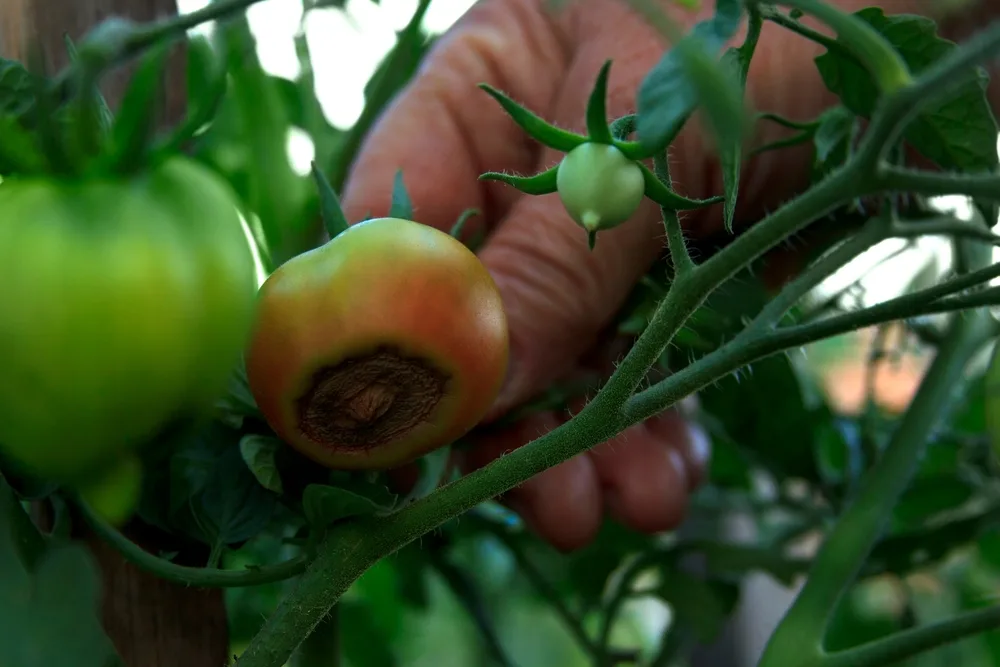
Blossom end rot is a physiological disorder that affects tomatoes and a wide range of other fruits. It is not caused by any common garden disease or pest. Rather, it is related to conditions within the plant and the fruit that lead to damage.
Damage from blossom end rot on tomatoes is easy to spot, normally appearing when fruits are around halfway through their development. Brown, sunken water-soaked spots develop at the base of the fruit and slowly expand over time, eventually covering around one-third to one-half of the entire fruit.
Eventually, these soft spots begin to harden, turning black and developing a rough, leathery texture. The top of the fruit will appear completely normal and will remain attached to the plant, with the bottom a stark contrast.
What Causes Blossom End Rot?
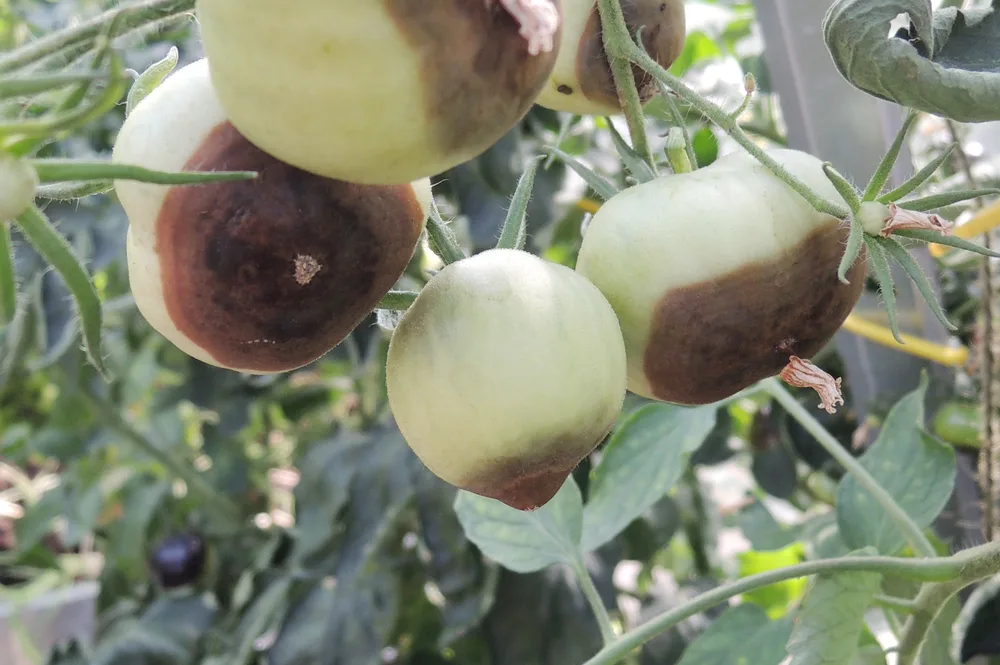
Although some look at the fruit damage and immediately think blossom end rot is a disease, it is not caused by any garden pathogens. The problem actually occurs within the fruit itself and is essentially a sign of a calcium deficiency.
Tomatoes need a wide range of nutrients to grow successfully. Nitrogen, phosphorus and potassium are the main ones (called macronutrients). But there are also various secondary and micronutrients that all contribute to overall plant health.
One of the most important secondary nutrients is calcium. During the growing season, tomatoes require plenty of calcium in order to develop fruits. When they lack this essential nutrient, the functions within the fruits are impaired, leading to the rotting spots that appear at the base.
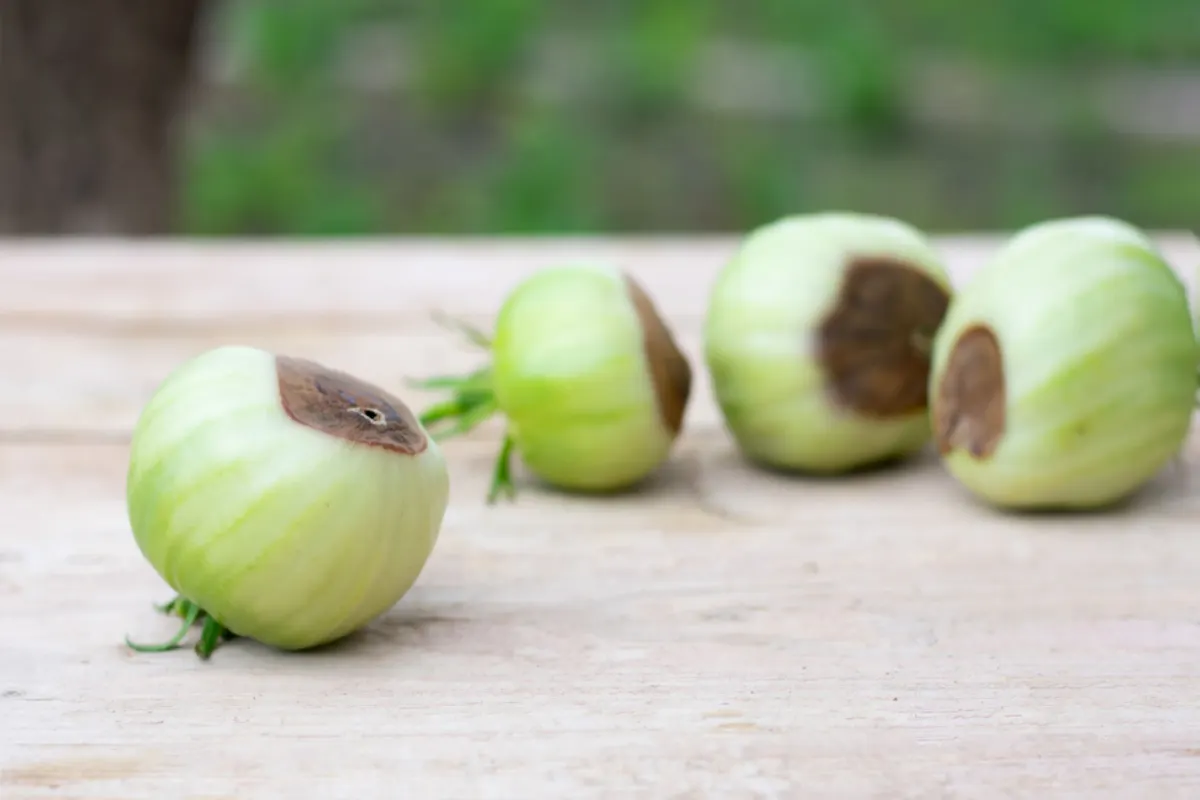
To get technical, this deficiency is related to the functioning of the cells. Lack of calcium affects the cell membrane of the tomato fruit – the part that contains all the important bits inside the cell – causing them to swell. This swelling damages the cells and subsequently the tissues at the bottom of the fruit.
Is Lack Of Calcium In The Soil To Blame?
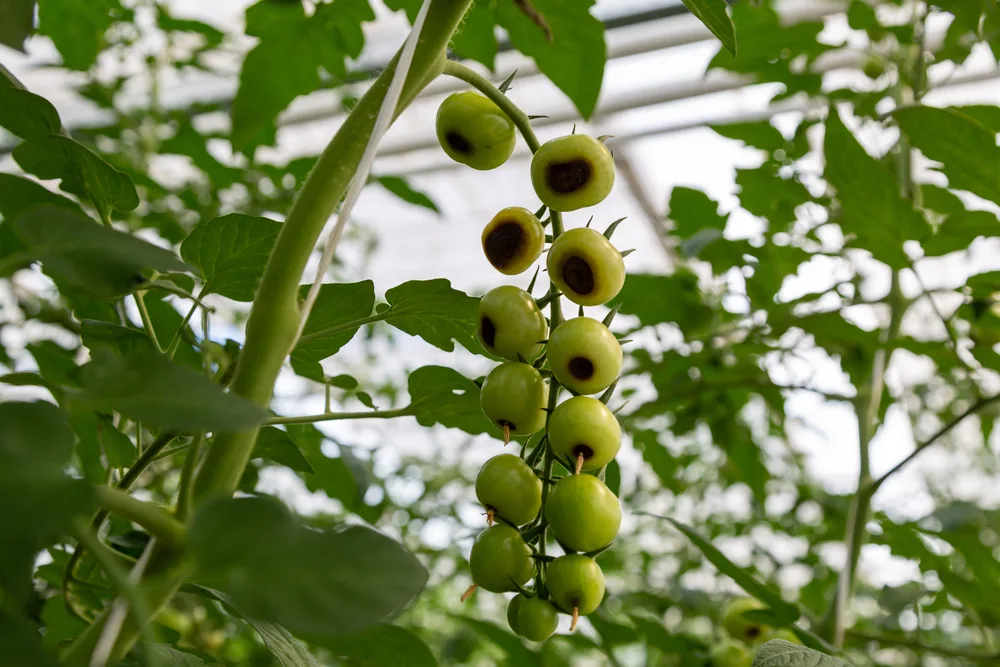
When gardeners hear calcium deficiency, they may assume blossom end rot is only a soil problem, applying fertilizer as a fix. While this is certainly possible, it is not the most common cause. Most soils have more than enough calcium to sustain tomato plants without any additional top-up.
So, what causes the problem? The most likely culprit is incorrectly watering.
Nutrients are absorbed by the plants through water. When they don’t receive water for a while or aren’t watered consistently throughout the season, that calcium doesn’t reach the fruits where it is needed, leading to rot.
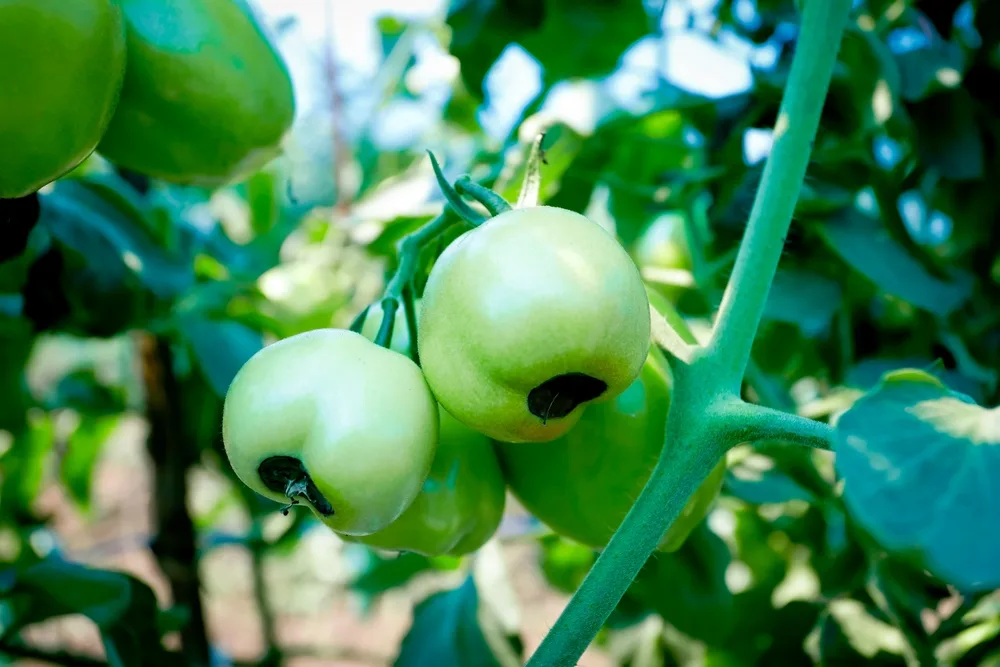
There are a number of other reasons why your tomatoes may not absorb the available calcium in the soil:
- Incorrect fertilizer use: An imbalance of certain nutrients, such as excess nitrogen or magnesium, prevents tomato plants from absorbing enough calcium.
- Cold temperatures: Tomatoes love warm weather and take up fewer nutrients when it’s cold.
- Incorrect soil pH: Soil pH affects the uptake of certain nutrients, including calcium.
- Excessive salts: Overuse of fertilizers or watering with poor quality water leads to a build-up of salts in the soil, damaging the roots and limiting nutrient absorption.
- Competition: When tomatoes are planted too close together, or too close to similar crops, they will use up the moisture and nutrients far quicker, leading to deficiency.
- Root damage: Damage to the extensive root system from garden tools or pulling nearby plants will limit the uptake of calcium.
How To Treat & Prevent Blossom End Rot
There are a number of suggested hacks for resolving blossom end rot, from eggshells to foliar sprays. But, the only way to really treat blossom end rot and prevent it from occurring for the rest of the season is to identify the root cause and fix the conditions.
Water Consistently
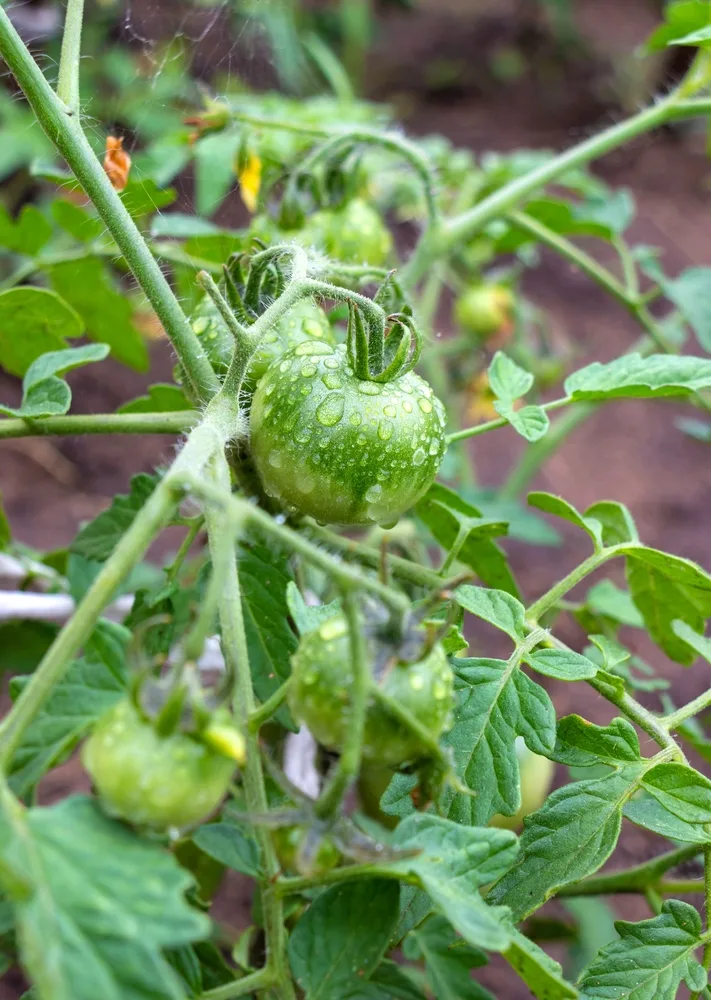
As incorrect watering is the most common cause of blossom end rot, getting it right is an essential part of both treatment and prevention.
Aim to keep the soil consistently moist throughout the season, adjusting the time between waterings according to the environmental conditions. Plant in well-draining soil to account for periods of excess rainfall. Always water more often when temperatures are high.
Never water when the top layer of soil is still moist. This causes waterlogging that also stops the roots from drawing up moisture. Water again when the top layer is just dried out to deliver the required minimum of one inch per week.
Test Your Soil
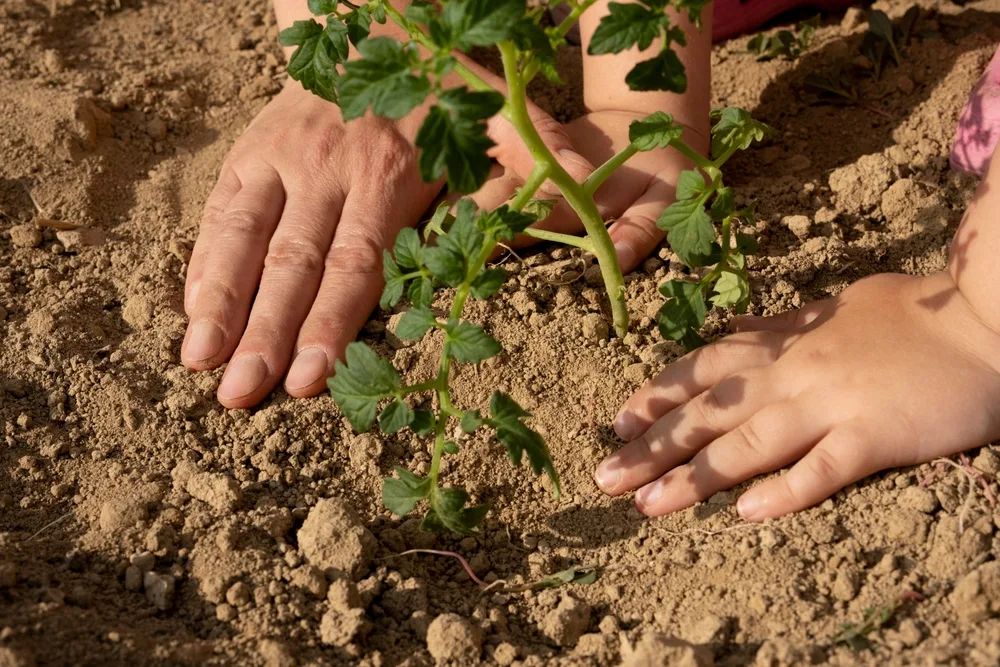
If you are certain you have been watering consistently and that underwatering or overwatering are not the cause, it’s time to conduct a soil test. Although this step seems tedious, it will be able to pinpoint the exact issue, making fixing the problem that much easier.
If calcium deficiency or nutrient imbalance is the issue, resolve it with an application of liquid fertilizer until the levels are balanced again according to the needs of your tomato plant. If pH is the problem, adjust using sulfur or lime until it is slightly acidic, around 6.5 on the pH scale.
It may take a while for the issue to resolve itself after your fix is applied (especially if it’s related to pH), but your fruits should improve over time or in the following season.
Adopt A Consistent Fertilizing Routine
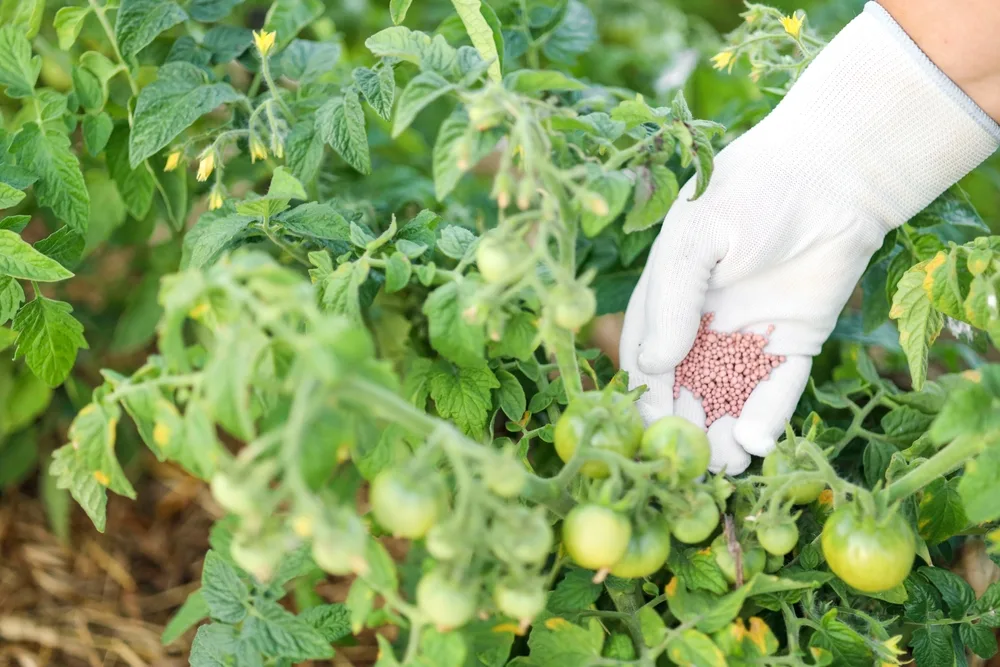
Once you’ve resolved any nutrient issues, it’s important to prevent them from happening in the future by adopting a consistent fertilizing routine.
Tomato plants benefit from fertilizer applications a few times across the season for optimal growth. This is especially helpful when planting many tomato plants at once, or when planting in low-quality soil.
Follow this complete guide to fertilizing your plants to make sure they get the right nutrients at the right time each year.
Protect Plants In Extreme Weather

Changes in temperatures have a major impact on water and nutrient absorption in your tomato plants. Limiting these changes and keeping conditions as consistent as possible will allow your tomatoes to function the same way throughout the season, preventing potential issues with blossom end rot.
During sudden dips in temperatures, use covers to keep your tomatoes warm. Also mulch around the base of the soil to keep the roots insulated. When temperatures rise excessively, provide some relief in the afternoon with shade cloth and water more often to keep the soil consistently moist.
Grow Resistant Varieties
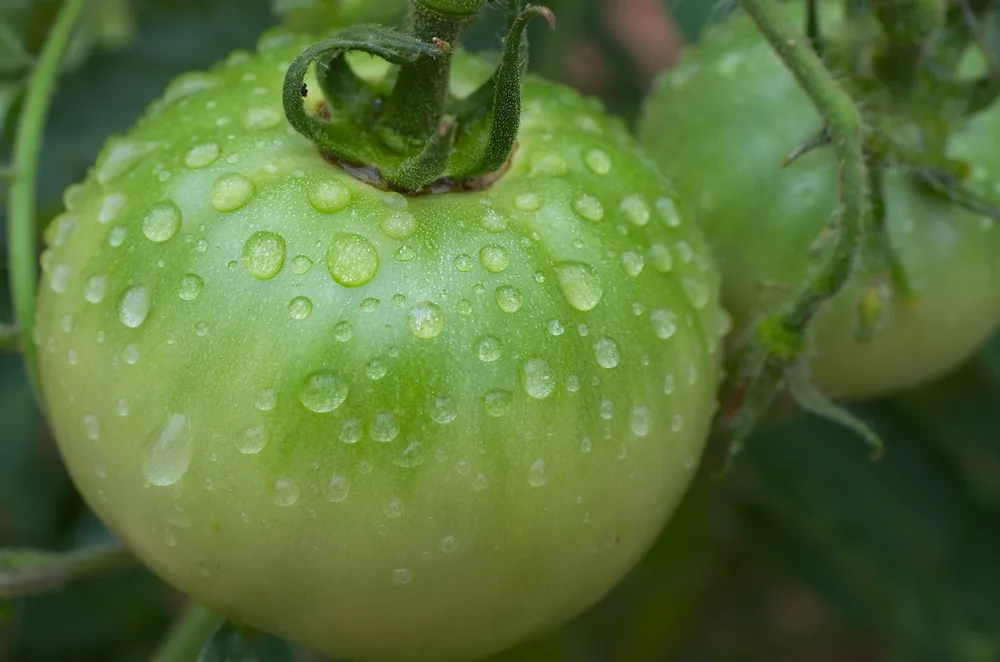
Finally, if none of these treatments and preventative tips resolve the issue, you may want to consider planting resistant varieties the next season.
A study by the University of Illinois identified which types to try:
- Celebrity
- Fresh Pak
- Jet Star
- Manapal
- Mountain Pride
- Pik Red
- Sunny
- Winter
And which to stay away from:
- Big Boy
- Castle King
- Fantastic
- Independence
- Supersonic
- Surprise
- Whopper
- Wonder Boy
Blossom end rot is frustrating, but it is also not the end of the world. With some corrections in care, your later fruits should be as round and juicy as you hoped. And if you’re not put off by the color, you can always chop off the affected parts of the fruits and eat the remainders anyway.
